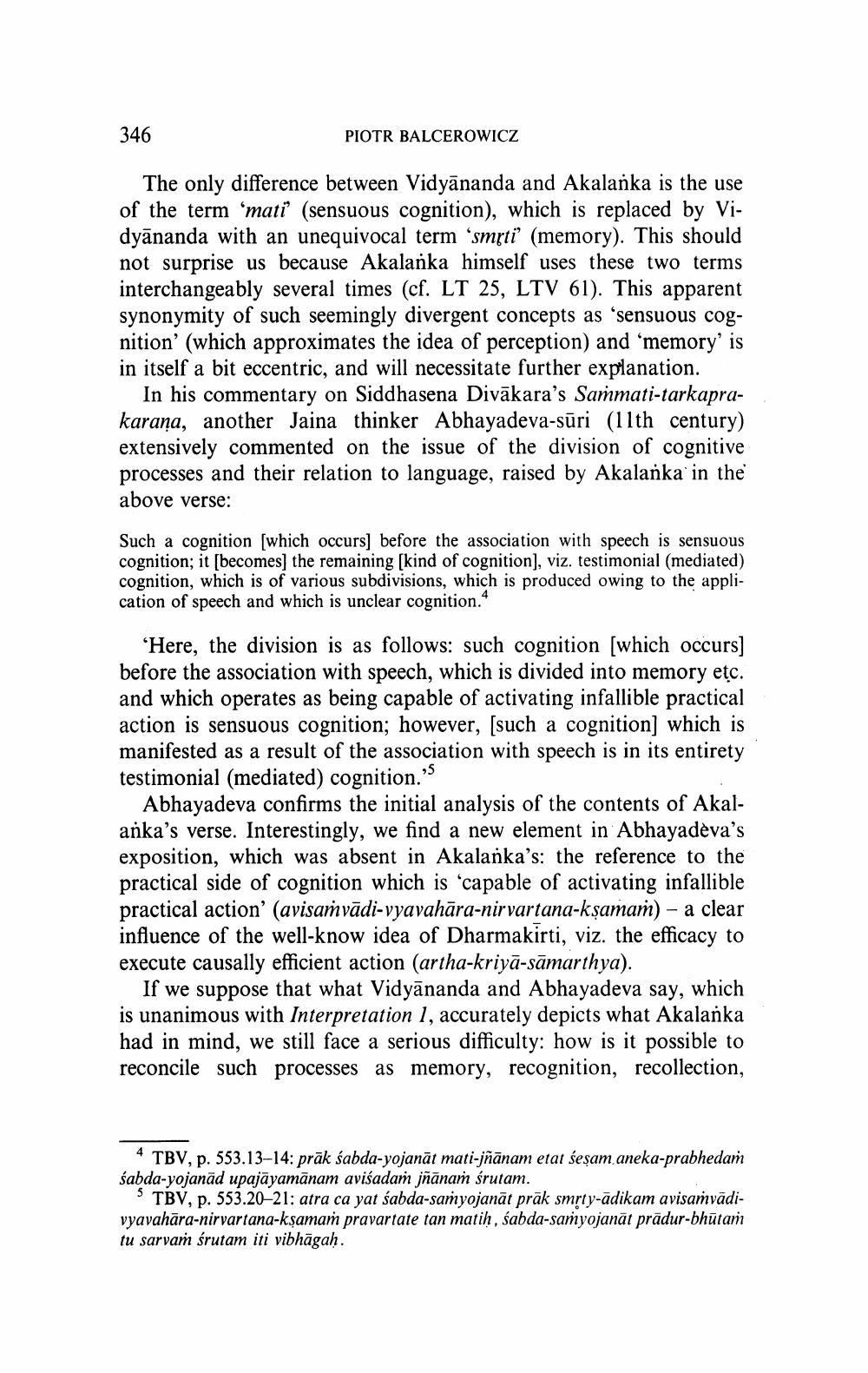Book Title: Pramanas And Language Dispute Between Dinnaga Dharmakirti And Akalanka Author(s): Piotr Balcerowicz Publisher: Piotr Balcerowicz View full book textPage 4
________________ 346 PIOTR BALCEROWICZ The only difference between Vidyānanda and Akalanka is the use of the term 'mati' (sensuous cognition), which is replaced by Vidyānanda with an unequivocal term “smrti' (memory). This should not surprise us because Akalanka himself uses these two terms interchangeably several times (cf. LT 25, LTV 61). This apparent synonymity of such seemingly divergent concepts as 'sensuous cognition' (which approximates the idea of perception) and memory' is in itself a bit eccentric, and will necessitate further explanation. In his commentary on Siddhasena Divākara's Sammati-tarkaprakarana, another Jaina thinker Abhayadeva-sūri (11th century) extensively commented on the issue of the division of cognitive processes and their relation to language, raised by Akalanka in the above verse: Such a cognition (which occurs) before the association with speech is sensuous cognition; it becomes the remaining [kind of cognition), viz. testimonial (mediated) cognition, which is of various subdivisions, which is produced owing to the application of speech and which is unclear cognition." 'Here, the division is as follows: such cognition (which occurs) before the association with speech, which is divided into memory etc. and which operates as being capable of activating infallible practical action is sensuous cognition; however, (such a cognition) which is manifested as a result of the association with speech is in its entirety testimonial (mediated) cognition.” Abhayadeva confirms the initial analysis of the contents of Akalanka's verse. Interestingly, we find a new element in Abhayadeva's exposition, which was absent in Akalanka's: the reference to the practical side of cognition which is capable of activating infallible practical action' (avisaṁvādi vyavahāra-nirvartana-kşamaṁ) - a clear influence of the well-know idea of Dharmakirti, viz. the efficacy to execute causally efficient action (artha-kriyā-sāmarthya). If we suppose that what Vidyānanda and Abhayadeva say, which is unanimous with Interpretation 1, accurately depicts what Akalanka had in mind, we still face a serious difficulty: how is it possible to reconcile such processes as memory, recognition, recollection, 4 TBV, p. 553.13-14: prāk sabda-yojanāt mati-jñānam etat sesam aneka-prabhedam sabda-yojanād upajāyamanam avisadam jñānam śrutam. 5 TBV, p. 553.20–21: atra ca yat sabda-samyojanāt prāk smrty-adikam avisamvādivyavahāra-nirvartana-kşamam pravartate tan matih, sabda-samyojanāt prādur-bhūtar tu sarvam śrutam iti vibhāgah.Page Navigation
1 2 3 4 5 6 7 8 9 10 11 12 13 14 15 16 17 18 19 20 21 22 23 24 25 26 27 28 29 30 31 32 33 34 35 36 37 38 39 40 41 42 ... 58
